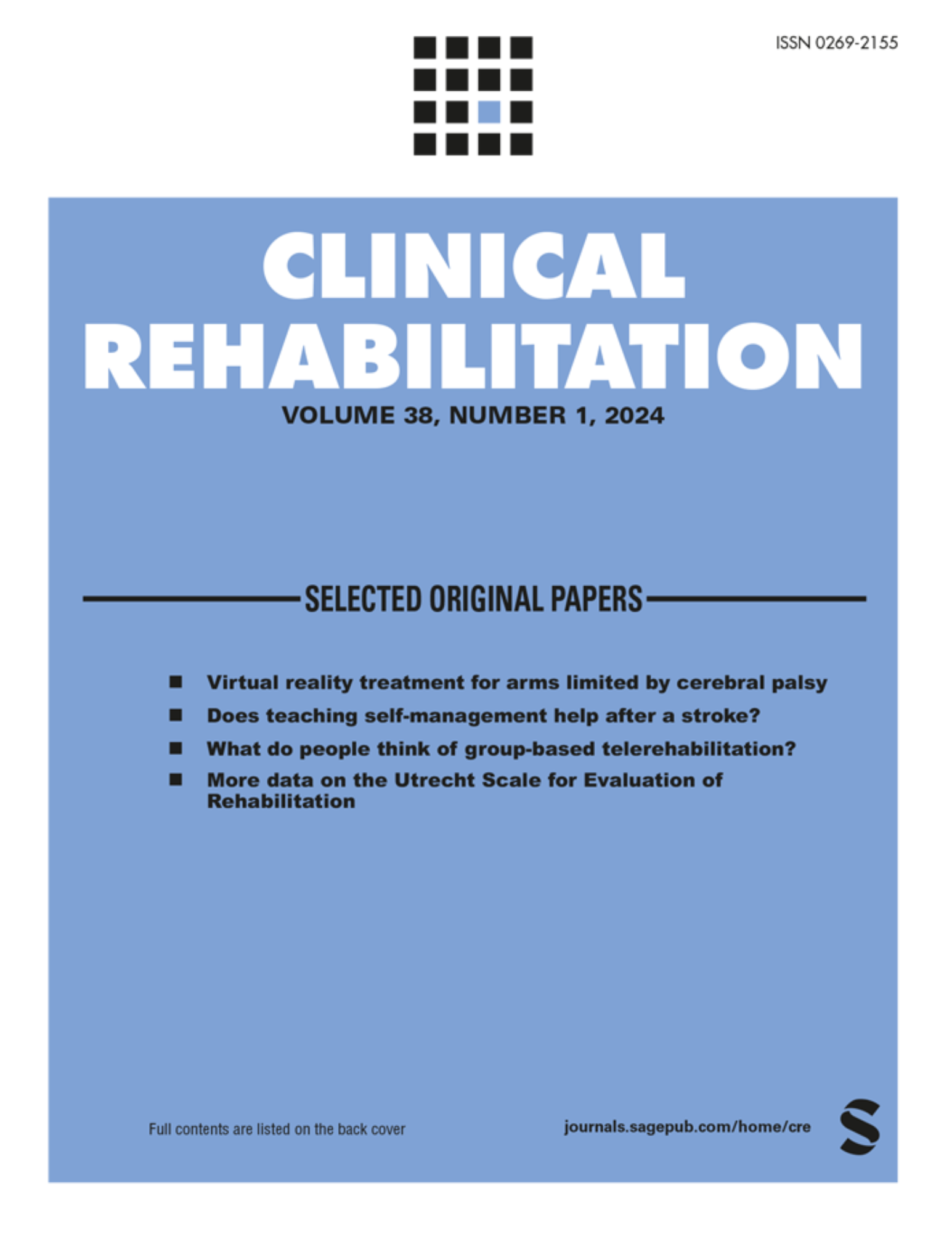
Arthroscopic partial meniscectomy: Electromyographic biofeedback training speeds recovery

Arthroscopic partial meniscectomy: Electromyographic biofeedback training speeds recovery
Efficacy of electromyographic biofeedback and electrical stimulation following arthroscopic partial meniscectomy: a randomized controlled trial
Clin Rehabil. 2012 Mar;26(3):224-36. doi: 10.1177/0269215511419382. Epub 2011 Oct 4Synopsis
45 patients undergoing arthroscopic partial meniscectomy were randomized into three groups following surgery. The study focused on measuring which postsurgical therapy was the most effective. The first group completed a home exercise programme, while the second group did home exercise along with receiving electromyographic biofeedback (EMG-B) training to quadriceps muscle. The third group did home exercise along with receiving electrical stimulation (ES) therapy to quadriceps muscle. Following functional assessments over a 6 week period, results indicated that home exercise combined with EMG-B training quickened rehabilitation following arthroscopic partial meniscectomy.
Was the allocation sequence adequately generated?
Was allocation adequately concealed?
Blinding Treatment Providers: Was knowledge of the allocated interventions adequately prevented?
Blinding Outcome Assessors: Was knowledge of the allocated interventions adequately prevented?
Blinding Patients: Was knowledge of the allocated interventions adequately prevented?
Was loss to follow-up (missing outcome data) infrequent?
Are reports of the study free of suggestion of selective outcome reporting?
Were outcomes objective, patient-important and assessed in a manner to limit bias (ie. duplicate assessors, Independent assessors)?
Was the sample size sufficiently large to assure a balance of prognosis and sufficiently large number of outcome events?
Was investigator expertise/experience with both treatment and control techniques likely the same (ie.were criteria for surgeon participation/expertise provided)?
Yes = 1
Uncertain = 0.5
Not Relevant = 0
No = 0
The Reporting Criteria Assessment evaluates the transparency with which authors report the methodological and trial characteristics of the trial within the publication. The assessment is divided into five categories which are presented below.
4/4
Randomization
3/4
Outcome Measurements
4/4
Inclusion / Exclusion
4/4
Therapy Description
3/4
Statistics
Detsky AS, Naylor CD, O'Rourke K, McGeer AJ, L'Abbé KA. J Clin Epidemiol. 1992;45:255-65
The Fragility Index is a tool that aids in the interpretation of significant findings, providing a measure of strength for a result. The Fragility Index represents the number of consecutive events that need to be added to a dichotomous outcome to make the finding no longer significant. A small number represents a weaker finding and a large number represents a stronger finding.
Why was this study needed now?
The standard surgical treatment for meniscal lesions is arthroscopic partial meniscectomy. A consequence of the surgery is the weakening of quadriceps muscles. Although many rehabilitation programmes following partial meniscectomy do exist, including home exercise and observed physical therapy, it is still unclear which one is the most effective. This study aimed to focus on the efficacy of home exercise on its own, when home exercise was combined with the physical therapy technique EMG-B, and when home exercise was combined with the physical therapy method ES.
What was the principal research question?
Was the addition of EMG-B training and ES to a conventional home exercise programme an effective rehabilitation method following arthroscopic partial meniscectomy, when measured over a 6 week period?
What were the important findings?
- There was a significant difference in mean time using a walking aid between the Home Exercise group (8.3 +/- 8.0 days), the EMG-B group (1.5 +/- 2.5 days), and the ES group (4.5 +/- 5.5 days) (p<0.05). The mean time using a walking aid was significantly shorter in the EMG-B group (1.5 +/- 2.5 days), than in the Home Exercise group (8.3 +/- 8.0 days) (p<0.017).
- There was significant progress in knee function at 2 and 6 weeks following the surgery for all three groups (p<0.017). The mean Lysholm Knee Scoring Scale score at 2 weeks after the surgery was significantly better in the EMG-B group, than in the Home Exercise group (p<0.017).
- The mean vastus medialis obliquus, vastus lateralis maximum, and contraction values at week 2 following the operation was significantly higher in the EMG-B group than in the Home Exercise and ES groups (p<0.017).
- Although there was significant improvement in pain VAS scores, gait velocity, joint ROM, and knee circumference for all three groups (p<0.017), there was no significant difference between the groups at any point (p>0.05).
What should I remember most?
Based on the functional and muscle results, the study indicated that patients who completed home exercise combined with EMG-B training appeared to have an expedited rehabilitation over the intial few weeks, especially in terms of time needing a walking aid, compared to those who underwent different forms of therapy.
How will this affect the care of my patients?
This study displayed that adding EMF-B training to conventional home exercise programmes following arthroscopic partial meniscectomy is effective in providing quick rehabilitation. However, few studies have evaluated this technique, and more trials on this subject are needed in order to confirm these results. Moreover, future studies should include a larger sample size.
Learn about our AI Driven
High Impact Search Feature
Our AI driven High Impact metric calculates the impact an article will have by considering both the publishing journal and the content of the article itself. Built using the latest advances in natural language processing, OE High Impact predicts an article’s future number of citations better than impact factor alone.
Continue



 LOGIN
LOGIN

Join the Conversation
Please Login or Join to leave comments.